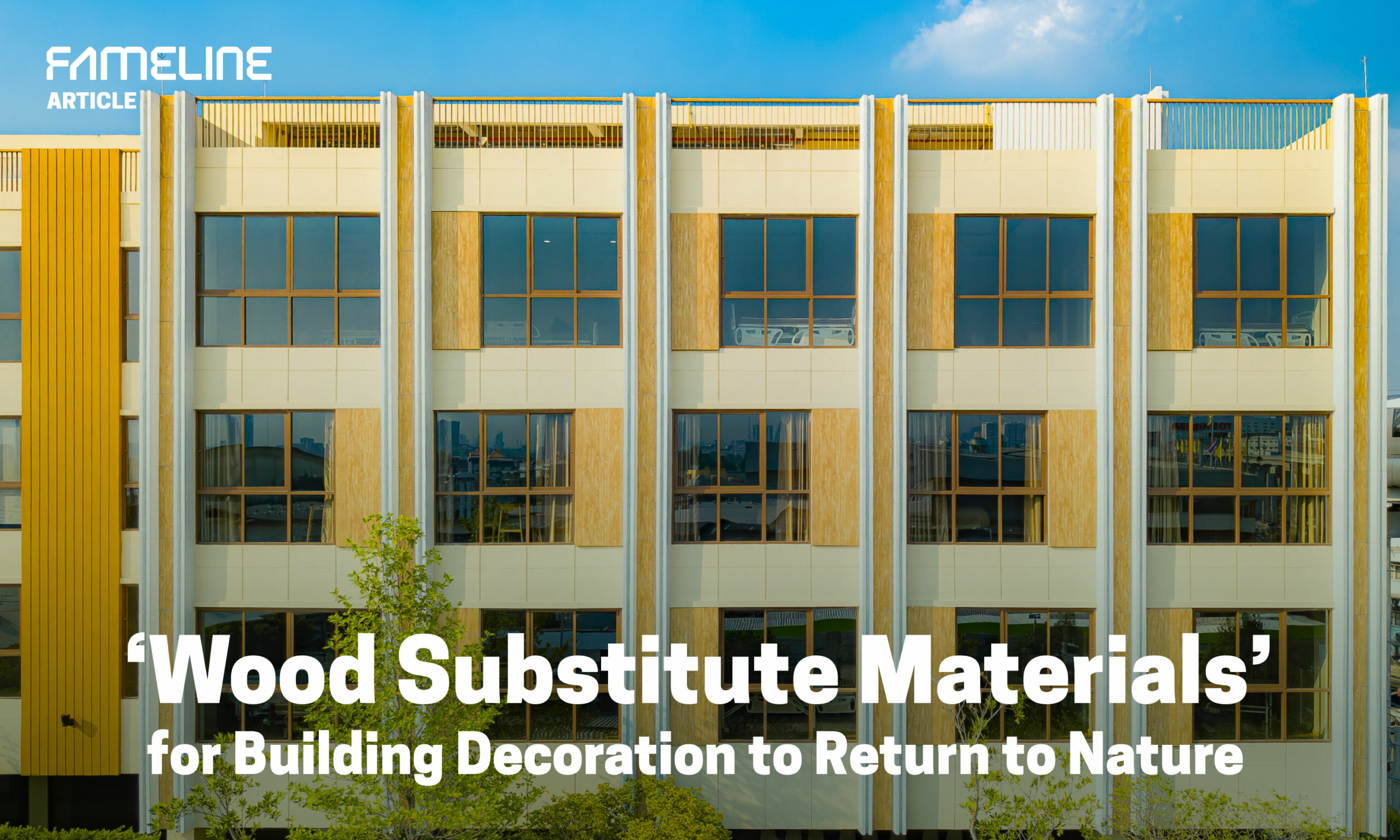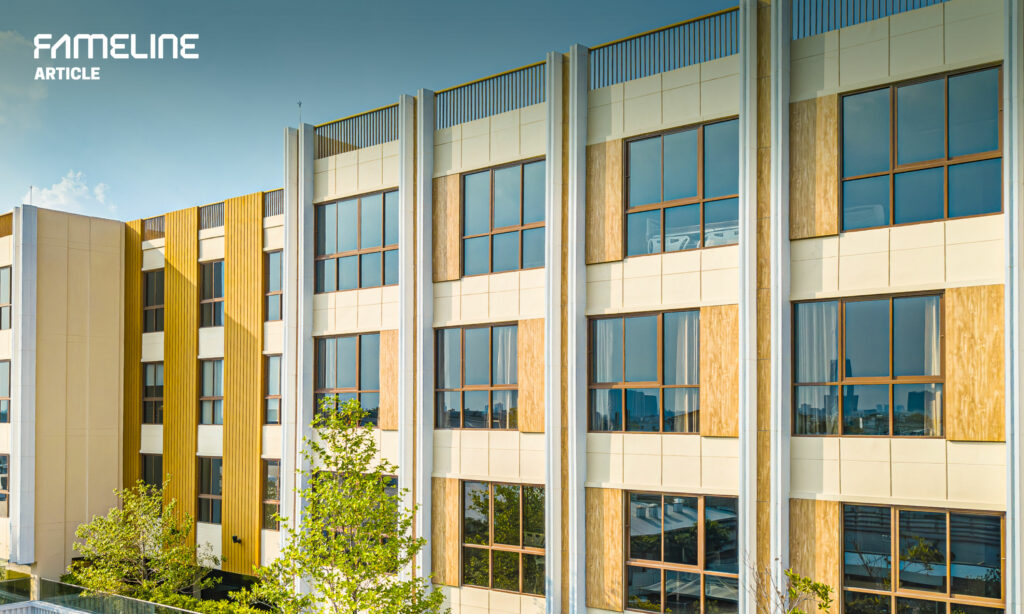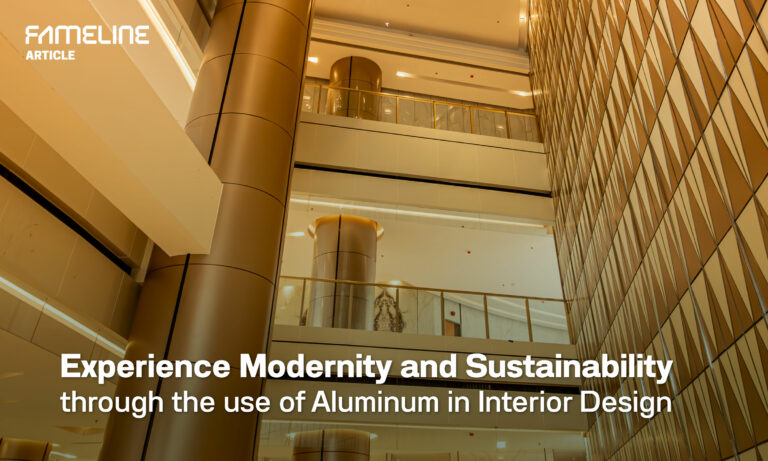
Wood Substitute Materials’ for Building Decoration to Return to Nature
The approach to creating sustainable architecture and environmentally friendly designs through the use of wood substitute materials has become essential for modern designers. The natural beauty and warmth of wood have long been a staple in architectural design. However, concerns over deforestation and the environmental impact of traditional wood usage have spurred a shift towards innovative alternatives. These materials not only mimic the aesthetic properties of wood, such as texture, color, and appearance, but also offer characteristics that surpass the limitations of original wood, aligning with the concept of returning to nature.
Another aspect is the choice of eco-friendly materials, like recyclable materials such as aluminum, steel, or glass. These help reduce the need for new raw materials and processing, indirectly diminishing environmental degradation. They also contribute to energy efficiency, both in production and usage phases. Materials with excellent thermal insulation properties reduce the need for heating or cooling in buildings, enhancing energy efficiency by decreasing reliance on artificial lighting and air conditioning systems.

Replacing with Natural Characteristics
Traditional wood substitute materials in architecture enhance the benefits of extended lifespan, durability, reduced maintenance, and design flexibility. Examples include fiber cement, vinyl, tiles, or environmentally friendly construction materials that decrease resource usage and promote sustainability. Materials like ‘Aluminum’ embody the concept of natural and sustainable solutions due to their 100% recyclability, reducing environmental impact from raw material extraction, production processes, transportation, and maintenance. This new approach in architecture emphasizes environmental responsibility, energy efficiency, improved living quality, and positively impacts social image. Consequently, the use of aluminum has become increasingly popular in modern architectural design, aligning with the concept of returning to nature through ‘Wood Grain Aluminum’.
In contemporary building decoration, a material gaining popularity for promoting a return to nature is the Aluminium Composite Panel (ACP). This lightweight yet robust material is ideal for exterior applications like walls or building facades. ACP’s resilience to weather and wear makes it suitable for buildings requiring durability with minimal maintenance. Additionally, its recyclability reduces natural resource usage and environmental impact.
Significantly, ACP offers high design flexibility with its ability to be produced in various patterns and colors, including wood-like textures. This makes ACP a great choice for creating a warm, natural environment inside buildings. It also boasts moisture resistance and fire retardancy, addressing common issues with real wood, such as pest problems and weather damage.
Using ACP not only enhances sustainable and eco-friendly building design but also adds dimension and beauty to decoration, making buildings more attractive and distinctive. It aligns with the concept of returning to nature, promoting long-term resource conservation and environmental care in building design.

Additionally, LITEWOOD by FAMELINE aluminum louvers are used for both exterior and interior decorations, enhancing the warm, natural ambiance and adding an interesting dimension to the space. This resolves issues associated with real wood, such as moisture resistance, fire resistance, durability against breakage during installation, and problems with pests like termites, carpenter ants, and wood-boring beetles. It also reduces long-term maintenance costs.
LITEWOOD by FAMELINE, a brand of these wood-patterned aluminum louvers, presents beautifully realistic wood patterns, robust strength for all weather conditions, and lightweight properties that ease structural burden. Non-flammable and long-lasting, with a lifespan of up to 20 years, they come in various widths of 12, 25, 50, and 100 millimeters. The design potential is enhanced with the option of mixed colors and sizes in a single bracket system (Multi-Panel). Available in four wood-tone shades – Mahogany, Walnut, Thai Teak, and Beech – they offer diverse design possibilities and effectively serve as an excellent wood substitute.


The Trend of Returning to Nature
The architectural design trend in 2024 is fully embracing sustainability, reflected in the choice of decorative materials. For instance, investors are seeking timeless, classic products that reduce the need for frequent changes. This trend aligns with the concept of ‘Quiet luxury’, a popular trend in the fashion industry, which is also mirrored in interior design through the use of high-quality materials in simple, functional designs.
Biophilic Design is another key trend, incorporating natural elements such as plants, sunlight, and environmentally friendly materials into spaces closely interacted with by people. This approach aims to boost enthusiasm for work. Dark wood tones or burnt wood styles are increasingly used by designers to decorate interiors or exterior walls, adding a sense of warmth and tranquility. This aligns with the idea that not every space needs to be brightly lit; darker materials can enhance the brightness of surrounding areas.
The use of wood grain aluminum can seamlessly blend with various design styles, including rustic, modern, Scandinavian, and traditional. The versatility of wood allows designers to incorporate diverse elements, adding value to spaces and conveying a timeless connection with nature.
This approach resonates with the views of renowned architect Frank Lloyd Wright, who often used wood patterns for sustainable beauty, based on the philosophy that
“Using organic materials creates a harmonious relationship between our man-made environment …and nature.”

บทความอื่นๆ ที่เกี่ยวข้อง





